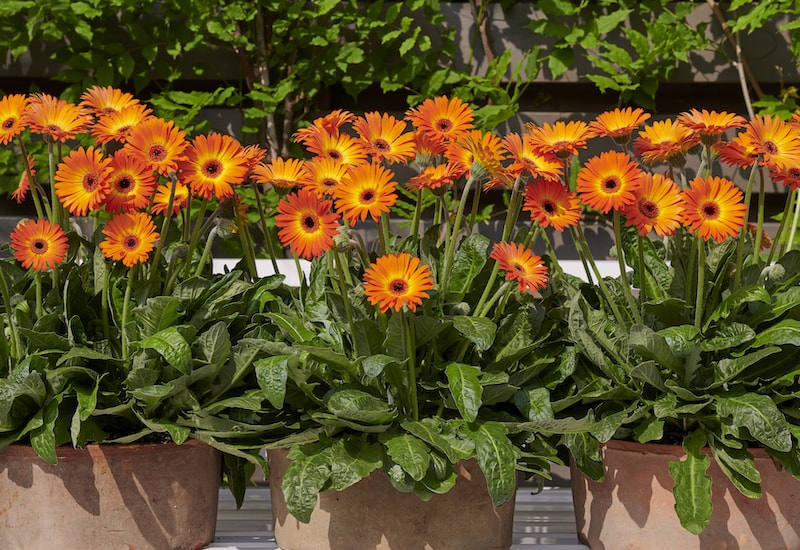Gerbera’s bright, vibrant, daisy-like blooms make this incredible flower perfect for growing in patio containers, at the front of borders, or even indoors. With long elegant stems, it also makes a wonderfully showy cut flower, adding sizzle to your displays. Best of all, as long as you provide good growing conditions, gerberas thrive here in the UK. Here’s how to sow, plant and grow magnificent gerberas.
What is a gerbera?
Hailing from sunny South Africa, gerbera is actually a member of the same plant family as the sunflower – the Aster family. Its blooms consist of a halo of petals surrounding a centre ring made up of tiny flowers. Some gerberas are hardier than others but, depending on which variety you choose, typically, you’ll grow it as a half-hardy annual outdoors, or as a perennial in the greenhouse. Alternatively, gerbera makes a lovely houseplant that’ll come back year after year.
How to grow gerberas from seed

Image: Visions BV, Netherlands
Because gerberas come from a considerably warmer climate than the UK, you should sow gerbera seeds into a propagator and place it somewhere sunny like a windowsill. Use a good quality seed compost, sowing directly onto a moist surface and leaving the seeds uncovered. If you’re sowing your gerbera seeds in the greenhouse, the ambient temperature should be between 18 and 21C.
You’ll need to prick out the seedlings once they’re big enough to handle and transfer them into trays, about 5cm (2”) apart, or pot them into individual containers. Only move them outside once all risk of frost has passed.
How to grow gerberas in pots

Image: Gerbera plants ‘Sweet Sunset’ from Suttons
If you prefer to order your gerberas as young plants, you should remove them from the packaging as soon as they arrive. Check the compost is moist and water if necessary. To grow them on, pot them individually into 10-13cm (4-5”) containers using a good quality potting compost. You should only move them outside once it’s warm enough, in May or June, or keep them inside as a houseplant.
How to care for gerberas

Image: Gerbera Plants ‘Glorious Range’ from Suttons
If you decide to grow gerberas indoors, they really do add a wonderful splash of colour to a bright windowsill, conservatory or greenhouse. Having said that, be just a little careful not to scorch them if the room gets very hot in the sun. Also, be sure not to let your plants get too cold, especially while they’re establishing – 10˚C (50˚F) is the minimum during this time.
During the growing season keep the plants well watered but not over wet, applying a balanced liquid feed every four weeks. Do also remember to keep your conservatory or greenhouse ventilated, opening the doors and windows on sunny days to give the space a good airing.
Gerbera plants make a colourful addition to the patio table and containers. Deadhead regularly and remove any faded flowers to encourage the plant to produce more. And to save your gerberas for next year, bring them indoors to overwinter or move them to a greenhouse with a minimum temperature of 5˚C (41˚F).
We hope this has inspired you to fill your garden with these brightly coloured blooms. For non-stop flowering all summer long, and the potential for year-after-year returns, gerberas make an excellent investment. See more of our most popular flower plants here.
Lead image: Gerbera ‘Classic Femmy’ from Suttons
Last Updated on October 27, 2025 by Suttons Horticultural Team






I am attempting to grow Gerberas from seed for the first time so any information on Gerberas would be appreciated.
I’m happy to get more info about gerbera. Gerbera are scare especially in the local nurseries
I truly enjoy this website and every single post. Thank you for sharing.